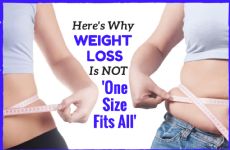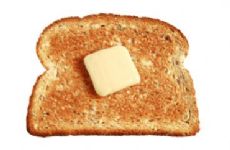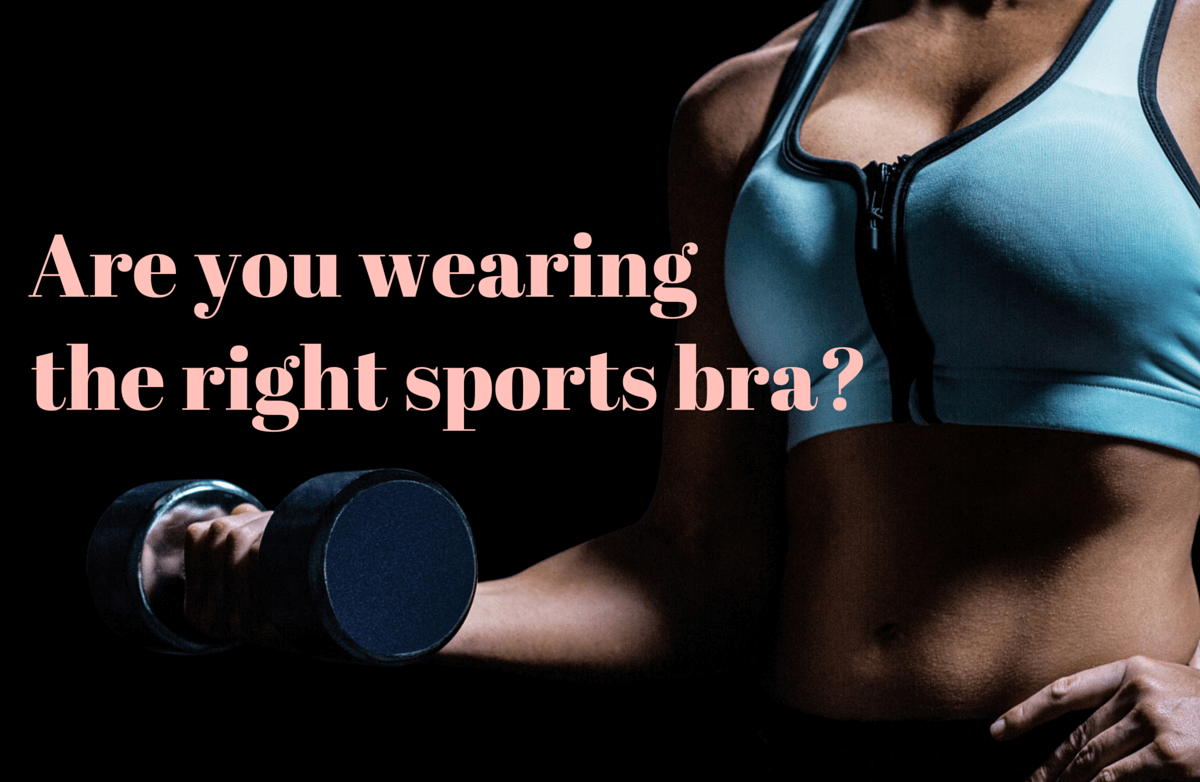|
A lot can change in a decade. Just 10 years ago, we were convinced the Ab Rocket was the secret to six-pack abs,that tank-top-ready arms were just a Shake Weight away, walking a mile in Sketchers Shape Ups was preferred to walking in boots and that the Nintendo WII was the answer to crushing childhood obesity and making home workouts fun again. Luckily, we've debunked plenty of myths since then, among them that butter and fat aren't all bad, fitness can be fun (Zumba, anyone?) and women have a place in the weight room. To show just how far we've all come and remember that sometimes hype should be taken with a grain of salt, let's take a trip down misconception lane to revisit some of the fallacies that were once widespread beliefs. #1. Calorie counting is the only way to lose weight. There was a time when calorie counting was considered the holy grail of weight loss. While it's true that eating more calories than you burn will ultimately trigger weight gain, that equation isn't the end-all, be-all in reaching your goal weight. Not all calories are created equal—the ones you get from clean, whole foods will serve your body better than empty calories from processed, high-sugar foods. Plus, different types of foods can alter our hormone levels and metabolic rate, both key factors in weight loss and gain. Complicating things further, science says that two people eating the exact same meal will extract different amounts of calories based on how they prepare the food, their unique gut microbes and the energy they expend during digestion. In his book "The Calorie Myth," Jonathan Bailor talks about the importance of calorie quality over quantity. Instead of being a slave to the calculator and constantly crunching numbers for each meal, he says it's better to focus on eating nutrient-rich foods—like vegetables, leafy greens, lean meats, eggs, fruits and nuts—that keep you satisfied and help your body burn fat more efficiently rather than junk foods that don't keep you full and cause your body to hang onto fat. #2. We should all meet the same standards of "healthy eating." Back when the food pyramid was introduced in the U.S. in 1992, there was a general perception that nutrition was one-size-fits-all. Today, we know that healthy eating can mean different things to different people, depending on factors like age, allergies and food sensitivities. "One man's meat is another man's poison," says exercise physiologist and author Rachel Straub. "For example, you may have an intolerance to gluten, dairy, corn, soy, eggs, peanuts or shellfish." If you're not feeling well despite following what seems like a healthy diet, it's best to talk to a licensed healthcare professional who can help you identify any sensitivities. Although there may not be one hard-and-fast definition of "healthy eating," Straub does recommend a diet of wholesome foods with little to no preservatives, that is rich in antioxidants, vitamins and minerals. We've also moved away from the "all or nothing" approach. Even with the best of intentions, we all have setbacks. Rather than trying to punish bad food choices with excessive exercise or self-deprivation—which can lead to a dangerous cycle of restriction and binging—a better rule of thumb is to not dwell on mistakes, stay focused on your goals and use the setback as a learning experience. "What's healthy can change from day to day," says ACE-certified personal trainer Shane McLean. "Eating more one-ingredient foods combined with exercise allows you to have a little indulgence every now and again. After all, we're only human." #3. You have to do cardio for an hour a day. Not so long ago, hitting the gym usually meant spending some quality time on the treadmill, stair climber or elliptical. While it's true that aerobic exercise does burn calories and strengthens your heart and lungs, that doesn't mean you have to pound the pavement or churn away on a cardio machine for an hour or more per day. According to Maurice Williams of Move Well Fitness, you can save time by focusing on quality over quantity. "If you exercise for a shorter time, say 30 minutes or less, and work just a bit harder (around six to eight on a scale of one to 10), you'll get the same benefit, or more, as a full hour of cardio." Trainer Alex McBrairty prefers HIIT intervals, which alternate between extremely challenging cardio followed by brief rest periods. "You can increase the intensity of your workouts and the number of calories burned while decreasing the amount of time needed to complete the entire workout," says McBrairty. "Performing HIIT cardio has also shown to be better at mobilizing body fat stores than longer, steady-state cardio." Is there such a thing as too much cardio? Perhaps, says Straub. "Yes, cardio increases cardiovascular fitness and burns calories, but if you're not incorporating weight training, you're setting yourself up for chronic injuries, including decreased bone density, impaired muscle strength, poor biomechanics during cardio workouts, low back pain, knee pain, postural ailments and more." Straub recommends doing three to five days a week of cardio exercise and at least two days a week of weight training. #4. Eating fat makes you fat. Remember the low-fat craze of the late 1980s and 1990s? Seeing fat as the villain, consumers lined up for low-fat and fat-free options, under the mistaken assumption that the absence of fat equaled the presence of health. Even into the early 2000s, low-fat labels continued to draw the eye of dieters. Over time, though, it became clear that a diet devoid of fat could still be high in calories, which could ultimately lead to weight gain. Plus, nutrition coach Kim Schaper points out that low-fat foods are often laden with chemicals, preservatives, additives and sugar, and are not as filling or satisfying as fat. "You're better off with the real deal," she says. Now we know that not only can we benefit from fat, but we can't live without this essential macronutrient. "Fat is an essential part of a healthy diet, providing essential fatty acids that keep skin soft and healthy and help deliver fat-soluble vitamins to your cells," says Alissa Rumsey, spokesperson for the Academy of Nutrition and Dietetics. McBrairty adds that appropriate amounts of dietary fat also help to protect internal organs and regulate hormones. And if you're trying to lose or maintain weight, fat can actually be an ally. "Fat helps to slow down digestion, which keeps you full and satiated long after you eat," says Rumsey. While this may not give you a free pass at fried chicken or butter-laden meals, it does mean some fat is an essential part of a healthy diet. For the best health benefits, Rumsey recommends choosing unsaturated fats, such as olive oil, avocados, nuts and seeds, and reducing the amount of refined carbohydrates. #5. Lifting weights makes you bulky. For a long time, the lifting world was more or less a boys' club. Per an unwritten rule, a woman's place was on the treadmill or in an exercise class, while the men reigned over the weight room. Fast-forward a few years, and today's fit-minded females have discovered the body-transforming benefits of strength training—no bulk required. "Lifting weights makes you bulky only if you’re an Olympic power lifter, and even then, you’d have to train many hours a day, lifting massive amounts of weight," says fitness trainer Treva Brandon Scharf. And because women have far less testosterone than men, they won't build as much muscle. "Natural testosterone levels in females are nil compared to those in males—males have anywhere from 12 to 45 fold higher levels," says Straub. "Weight lifting is one of the best things we can do for our bodies," Schaper says. "It helps to build lean muscle mass, increases our metabolic rate and makes us feel strong." If you've been avoiding strength training for fear of bulking up, or if you're stuck in a cardio rut, consider scheduling an introductory session with a trainer at your gym or developing a simple routine to get started. The results may surprise you. #6. You can spot-reduce or "tone up" specific areas. Contrary to what all those ab roller marketing slogans would have you believe, it's simply not possible to eliminate fat from targeted areas with a few targeted exercises. "According to Men's Health a few years ago, it takes 22,000 crunches to lose a pound of fat from your midsection," says McLean. "Who has time for that? Your body doesn't pick and choose spots to burn fat from, ever." Straub explains that science is behind why spot reduction can't happen. "Physiologically, to reduce body fat, you need to expedite lipolysis or the breakdown of fat. To maximize lipolysis, you must maximize metabolic demand. And to maximize metabolic demand, you must maximize the intensity of exercise." Put simply, the key to fat loss is an overall body increase in metabolism, not just in a single area. That doesn't mean muscle-strengthening exercises don't have a benefit—just that they won't eliminate any excess fat that may be covering those muscles. #7. You need protein supplements to build muscle. Along with the low-carb diet craze of the 90s came a new fixation on protein. Worried they weren't getting enough in their daily diets, many people turned to protein supplements and soon, jugs of protein powder became synonymous with health and fitness. Although bodybuilders and competitive athletes may benefit from supplementing, the majority of us get plenty of protein from our meals and snacks. "If you're eating a well-balanced diet, you're likely consuming sufficient protein," says Straub. The more important question to ask is how much protein do you need, and how much are you consuming through real food? Straub says the general guideline is to consume the equivalent of half up to your full body weight of protein per day. "This means if you weigh 160 pounds, you should aim for 80 to 160 grams of protein a day, with around 120 grams or the midpoint, possibly being ideal, she says. “To gauge protein amounts, one ounce of animal product (meat, poultry or fish), one whole egg, two egg whites, a half cup beans, lentils, [or] tofu all have seven grams of protein." #8. You can’t work out while pregnant. The age-old myth that women can't exercise during pregnancy is long gone—in fact, it's been turned on its head. According to Sarah Ann Kelly of Mom Trainer, the American Congress of Obstetricians and Gynecologists recommends that pregnant women exercise 150 minutes per week, or 30 minutes five days a week. "Exercises like walking, indoor cycling, swimming and moderate strength training are actually good for you," Kelly says. The benefits of staying in shape include reductions in bloating, leg cramps, varicose veins, swelling and pregnancy aches and pains. Studies also link regular prenatal exercise with easier and shorter labor. Strength exercises, such as squats, lunges, deadlifts, pelvic tilts, kegels, balance training and side planks, will also tone your abdominal wall and pelvic floor, which can help with pushing in labor. Having a strong core and pelvic floor will also help you heal faster after birth and prevent postpartum issues, such as incontinence, pelvic prolapse and pain. More importantly, Kelly notes that exercise can lower the risk of serious pregnancy complications, including gestational diabetes and preeclampsia. "Your doctor will recommend a weight gain based on your pre-pregnancy BMI, and exercise can help you regulate your weight during pregnancy," she says. #9. Muscle can turn to fat (or vice versa). This outdated warning was most likely the result of once muscular people becoming sedentary, causing a shrinkage of muscle and an increase in body fat. According to the experts, these two are not related. "Anatomically, you have bone covered by muscle, which is then covered by fat. Muscle doesn’t become fat, and fat doesn’t become muscle," says Straub. "The more correct statement would be that the underlying muscle can change in size, as can the amount of overlying fat." This means, for example, that if muscle mass increases and fat decreases, the result is an overall increase in muscle. Alternatively, if muscle mass decreases and fat increases, this results in an overall increase in fat. Did you ever fall for any of these old health and fitness myths? Are there any others that you'd add to the list? |
Popular Entries
Related Entries
More From SparkPeople |




.png)
















